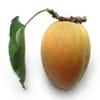Health Benefits
Asthma treatment, Cancer prevention, Controls blood pressure, Digestive aid, Heart care, Maintains hormonal balance, Regulation of heart rate, Skin cleansing, Skin rejuvenation
Cancer prevention, Heart care, Increases metabolic rate, Strengthening of bones, Treatment of skin Diseases
General Benefits
Boosts immune system, Controls blood pressure, Digestive aid, Eye care, Maintains healthy cholesterol level, Strengthens bones
Anti oxidant properties, Boosts immune system, Digestive aid, Eye care, Improves blood circulation, Sore throat treatment
Skin Benefits
Hydrates skin, Reduces wrinkles, Treatment of dark spots, Treatment of skin diseases
Anti-aging benefits, Reduces wrinkles, Skin rejuvenation, Treatment of skin diseases
Hair Benefits
Good conditioner, Regulates hair growth, Rejuvenates scalp, Softening mask, Treatment of dandruff
Protects hair
Allergy Symptoms
Abdominal cramps, Anaphylaxis, Breathing difficulty, Diarrhea, Itching of mouth, Itching sensation in throat, Swelling of mouth, tongue or lips, Vomiting, Wheezing
Abdominal pains, Coughing, Diarrhea, Itching, Runny nose, Sneezing, Swelling of mouth, tongue or lips, Wheezing
Side Effects
Dizziness, Headache, Nausea, Vomiting
Allergic reaction
Best Time to Eat
Best if taken as a breakfast (or empty stomach), As a snack in the late afternoon, Don't consume at night and before bed, Eat the fresh ones, avoid mixing with any other foods, don't eat after meal.
Best if taken as a breakfast (or empty stomach), As a snack in the late afternoon, Don't consume at night and before bed, Eat the fresh ones, avoid mixing with any other foods, don't eat after meal., Morning time (before lunch)
Vitamin A (Retinol)
Not Available
Vitamin B5 (Pantothenic Acid)
Not Available
Vitamin B6 (Pyridoxin)
Not Available
Vitamin B9 (Folic acid)
Not Available
Vitamin C (Ascorbic Acid)
Vitamin E (Tocopherole)
Not Available
Vitamin K (Phyllochinone)
Not Available
Lutein+Zeaxanthin
Not Available
Phytosterol
Not Available
Calories in Fresh Fruit with Peel
Calories in Fresh Fruit without Peel
Not Available
Not Available
Calories in Frozen Form
Not Available
Not Available
Calories in Dried Form
Not Available
Calories in Canned Form
Not Available
Varieties
Gold Cot, Tilton, Wenatchee, Goldbar, Gold Kist, Tomcot, Harcot, Brittany Gold, Harglow, Hunza, Moorpark, Patterson and Royal Rosa
Dwarf Huckleberry, Cascade Huckleberry, Mountain huckleberry and Blackwinter Huckleberry
Color
Orange, Yellowish-orange
Blue, Purple, Purplish black
Inside Color
Yellow
Purple
Taste
Smooth, Sweet
Sweet
Origin
China
North America
Grows on
Trees
Not Available
Soil Type
Well-drained
Loamy, Sandy, Well-drained
Climatic Conditions
Dry, Hot
Humid, Warm
Facts about
- 9 Jan is considered as the National Apricot Day.
- Apricots have been around for more than 4000 yrs.
- In latin, the meaning of apricot is 'precious'.
- 95% of apricots in the US are produced by California.
- "I'm your huckleberry" is a way of saying that one is just the right person for a given job.
- The phrase "a huckleberry over my persimmon" was used to mean "a bit beyond my abilities".
Top Producer
Turkey
United States of America
Other Countries
Algeria, Egypt, France, Iran, Italy, Morocco, Pakistan, Spain, Uzbekistan
Canada
Top Importer
United States of America
Canada
Top Exporter
France
Chile
Botanical Name
Prunus armeniaca
Gaylussacia brachycera
Synonym
Not Available
Not Available
Subkingdom
Tracheobionta
Tracheobionta
Division
Magnoliophyta
Magnoliophyta
Class
Magnoliopsida
Magnoliopsida
Subclass
Rosidae
Asteridae
Family
Rosaceae
Ericaceae
Species
P. armeniaca
G. brachycera
Difference Between Apricot and Huckleberry
We might think that Apricot and Huckleberry are similar with respect to nutritional value and health benefits. But the nutrient content of both fruits is different. Apricot and Huckleberry Facts such as their taste, shape, color, and size are also distinct. The difference between Apricot and Huckleberry is explained here.
The amount of calories in 100 gm of fresh Apricot and Huckleberry with peel is 48.00 kcal and 37.00 kcal and the amount of calories without peel is Not Available and Not Available respectively. Thus, Apricot and Huckleberry belong to Low Calorie Fruits and Low Calorie Fruits category.These fruits might or might not differ with respect to their scientific classification. The order of Apricot and Huckleberry is Rosales and Ericales respectively. Apricot belongs to Rosaceae family and Huckleberry belongs to Ericaceae family. Apricot belongs to Prunus genus of P. armeniaca species and Huckleberry belongs to Gaylussacia genus of G. brachycera species. Beings plants, both fruits belong to Plantae Kingdom.









